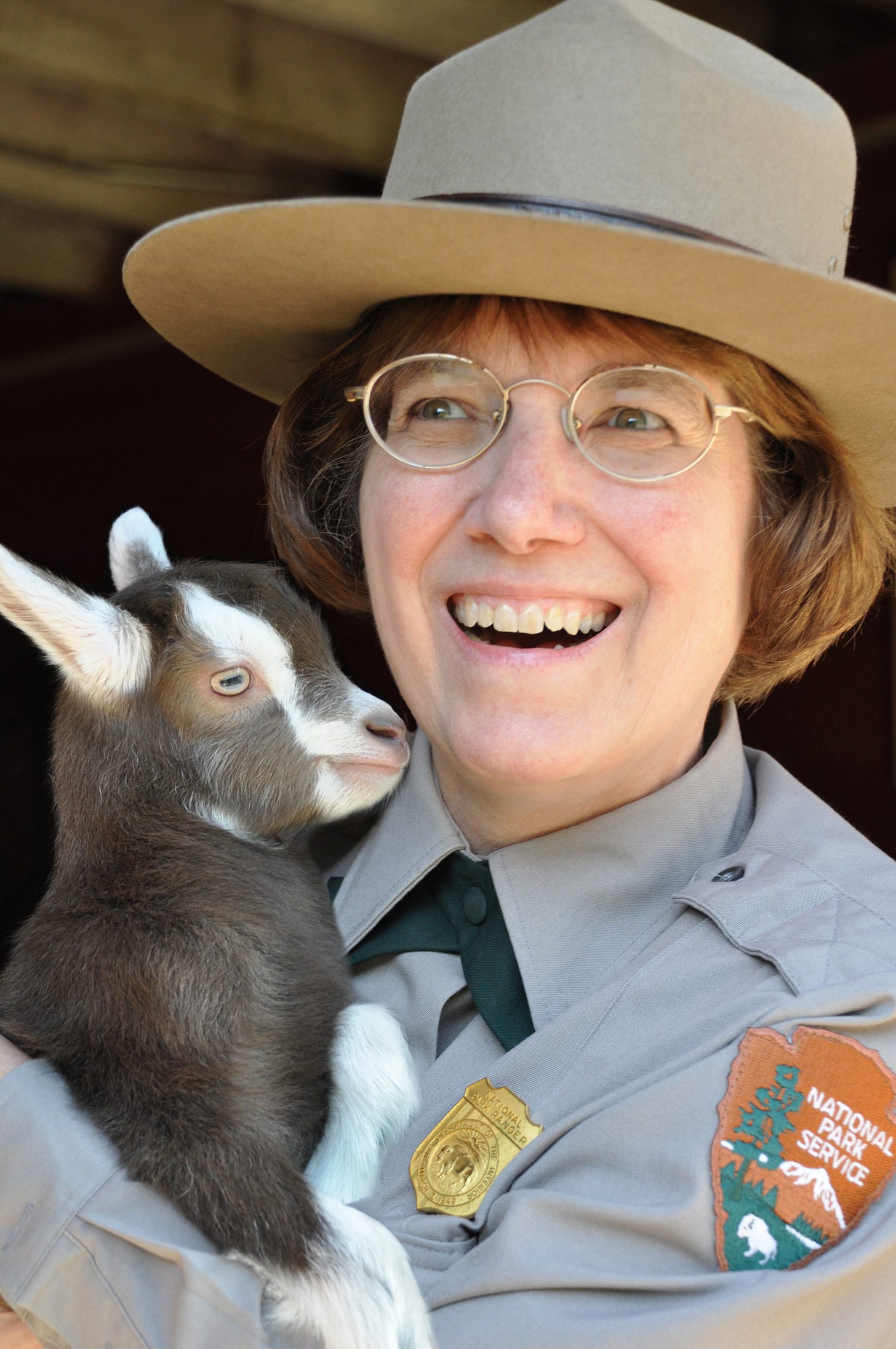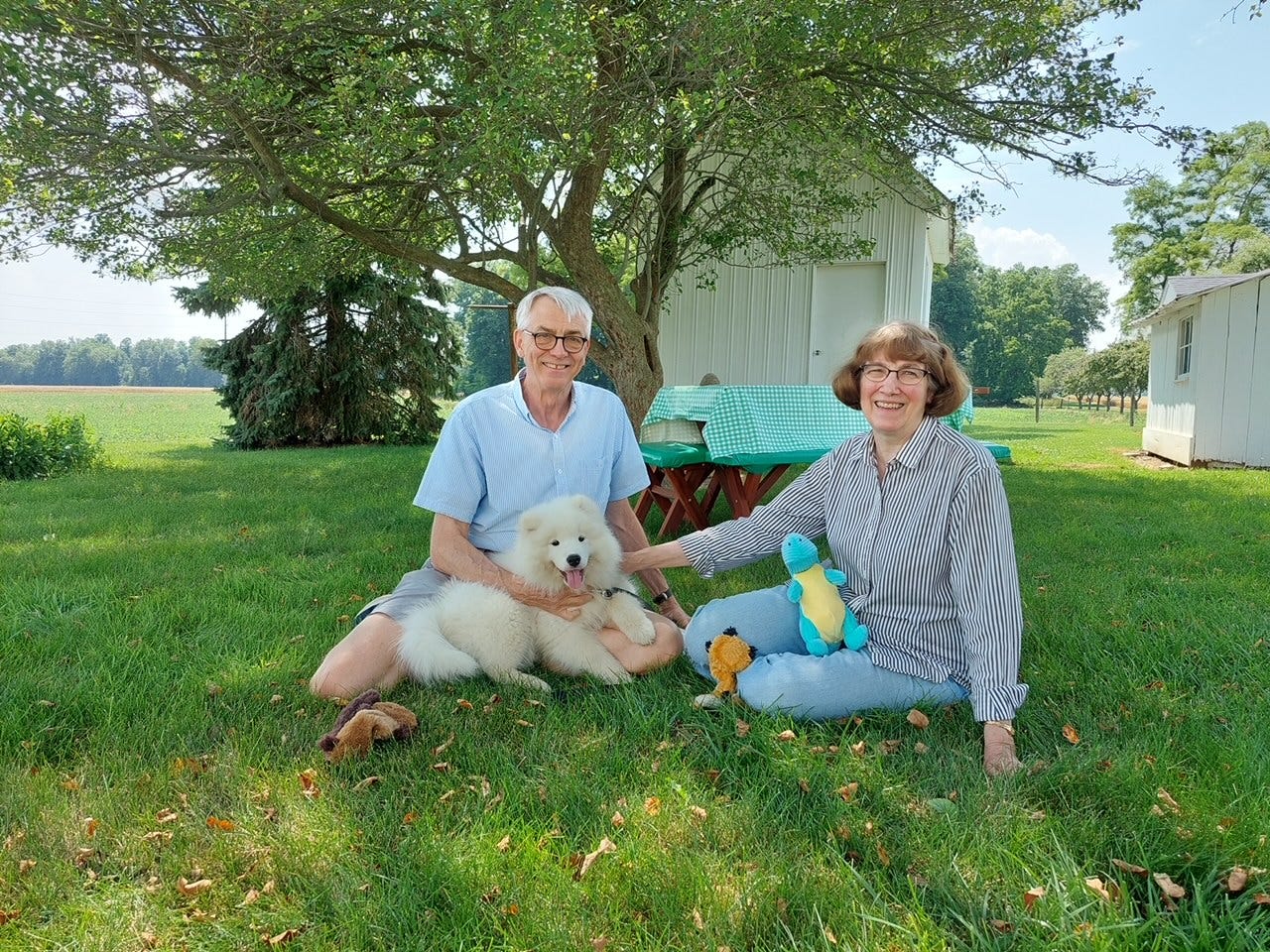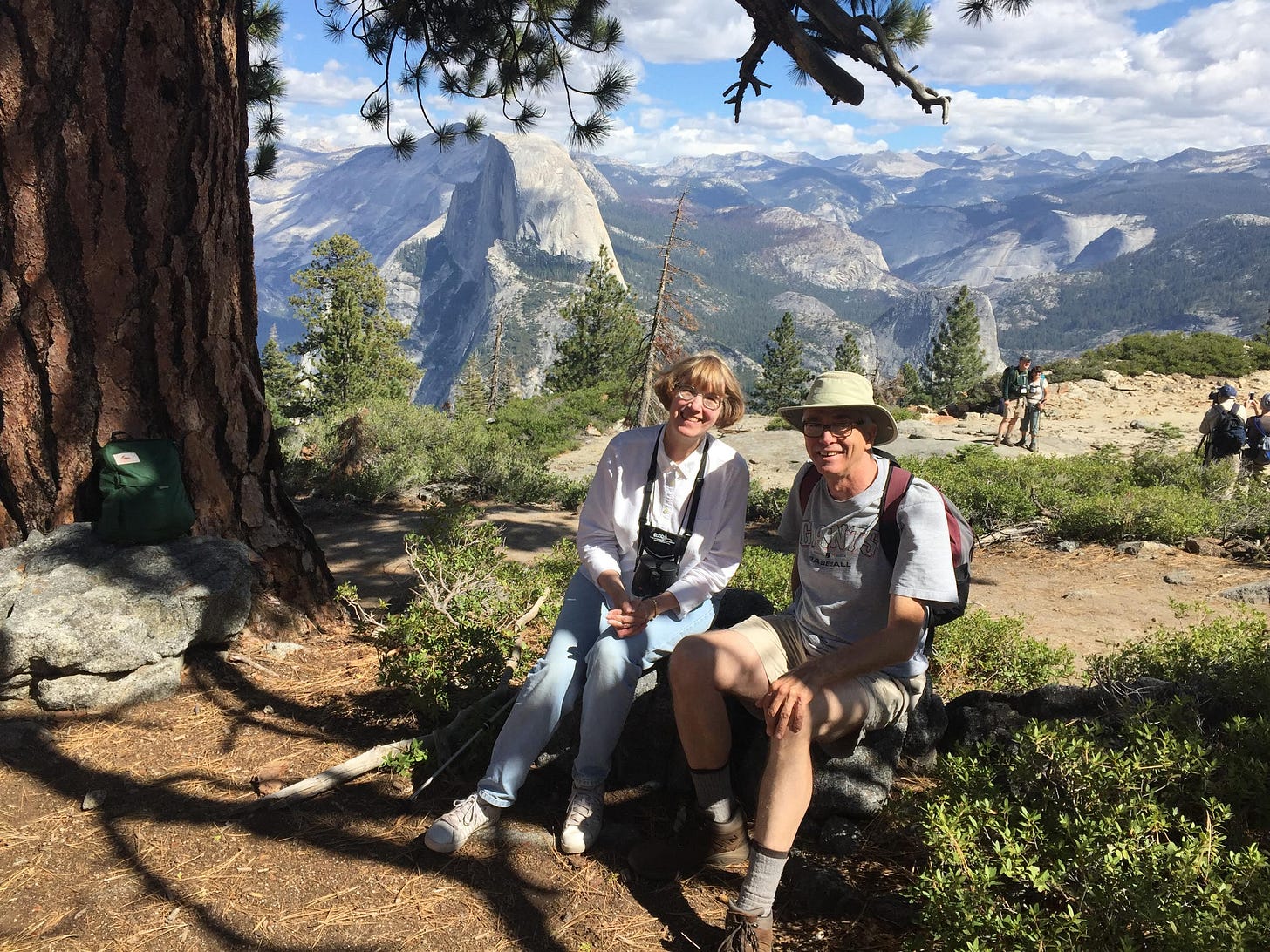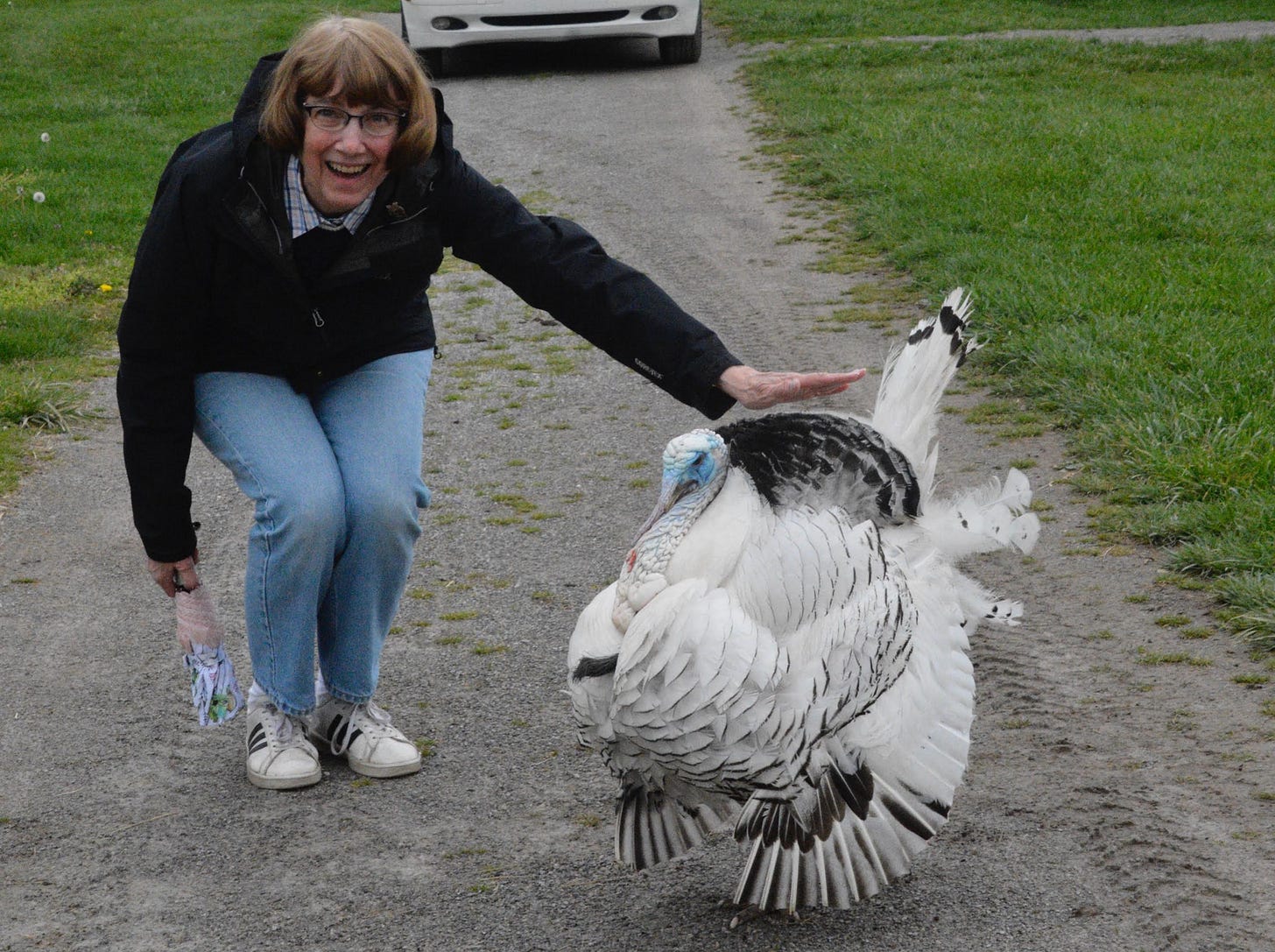This is a series of flash interviews with people I admire, people who are doing something—anything, a lot of things—for the Earth. These folks walk the walk, each of them in their own way, using their own unique skillset. They dedicate their energy, their time, and their hearts to a crucial cause: the preservation of this precious planet we call home.
(NOTE: I didn’t plan it this way, but here we are in National Park Week … so … quite appropriate to feature a park ranger who spent her whole career in the National Park Service! Connie, thank you for your faithful work on behalf of our U.S. national parks and our Mother Earth.)

When you grow up on a farm as Connie Backlund did, your life is immersed in nature from an early age. You spend all your free time outside, helping care for animals and crops, roaming joyfully through fields and woods, learning to love the natural world.
So it’s no surprise that after majoring in biology and math in college, followed by a short stint teaching life sciences in a public school, Connie ended up working for the National Park Service. The resume of her nearly 40-year career is an impressive list of posts at national parks all over the country: Shenandoah in Virginia, Mt. Rainier in Washington, the Everglades in Florida, Mammoth Cave in Kentucky, Cape Hatteras in North Carolina, and the Grand Canyon in Arizona.
In 1994 Connie and her husband Gib, a fellow NPS employee, came to Flat Rock, N.C. so she could become superintendent at the Carl Sandburg Home National Historic Site. The 267-acre park is anchored by Connemara, the home where Pulitzer Prize-winning poet Carl Sandburg lived the last 22 years of his life. There are also hiking trails and a barn housing a herd of resident goats—descendants of the ones raised by Sandburg’s wife and daughter.
What an ideal assignment for Connie, the farm girl! She happily served at the Sandburg Home National Historic Site for 18 years.
Since retirement, Connie’s close relationship with nature has evolved into community activism. She joined the boards of several local organizations and helped usher through a National Register nomination for the Historic Village of Flat Rock. She and Gib are ardent supporters of Conserving Carolina, a nonprofit land trust that works to restore and preserve natural areas in western North Carolina and upstate South Carolina—and to inspire people to care about and protect those places.
Another source of satisfaction for Connie was helping her dad preserve the family farm in Ohio. Knowing that their homeplace will remain agricultural land for perpetuity gave them both peace of mind as her father neared the end of his life. Connie still visits the farm regularly, and in recent years she converted six acres of it into a prairie ecosystem which attracts an abundance of pollinators and birds.
Here’s what Connie shared with me about her lifelong connections to the natural world.
Connie, please tell us about some of your early experiences in nature.
My greatest gift of childhood, beyond the blessing of my wonderful parents, was that of growing up in the country. Our family farm in west central Ohio had rich soils nurturing corn, soybeans, wheat, and oats. We raised dairy cows, pigs, chickens, and beef cattle and had the full complement of pets: dogs, cats, bunnies, ducks, parakeets, and goldfish.
I broke tradition from a long line of the best cooks and bakers and dashed my mom's high hopes of teaching me those treasured talents. I was always zipping outside, insisting I had to help my dad get the cows. My dad knew all the trees, wildflowers, birds, and other animals that lived in our two woods, and I was his little shadow soaking up all that he shared.
When I was elementary school age and my dad would go to the barbershop on Saturday evenings, he would bring home for me the little Golden Press nature guide books. I still have every one that I was given all those years ago, with the first one being about birds. I was probably around 10 when I used that guide to identify my very first bird on my own—a chipping sparrow that was nesting in a shrub outside our dining room window.
How did those early experiences shape your relationship with the natural world?
Being outdoors and exploring the natural world has always been a great joy. Even today, I treasure carefully capturing a butterfly or insect in a jar and bringing it inside to identify and then taking it back outside to release it. I am sure this all stems from the many lightning bugs (fireflies) that glowed in a jar beside my bed at night during my childhood.
My curiosity about nature and our fellow living creatures has been a constant in my life. Along the way a sacred appreciation for the value of each and every creature has emerged. For me, sharing our earthly home with these other amazing living beings is what has nurtured my role as a steward of our natural world.
My pathway in college as a biology major and my subsequent 38-year career with the National Park Service all can be traced back to my childhood on the farm. Every Mother's Day, as a family my mom, dad, and I would go back to our two woods and pick bouquets of wildflowers. Though the large trilliums were the most beautiful, we had very few and my dad said it was best not to pick them. So the important lessons of stewardship and conservation were nurtured in tandem with being a curious naturalist.
How do you connect with nature now … through your work or leisure or both?
A special connection to nature today is through a spirit of gratitude. There is not a day that goes by that I do not chirp my appreciation for having worked in many beautiful national parks and sharing their natural history with the visiting public.
I am grateful, too, for each and every plant and animal with whom I share my earthly home. What more can I do to be a dedicated steward for their well-being?
I therefore have chosen to be involved and supportive of land trusts and conservation groups. I am especially partial to those preserving natural habitats in the face of our build-more society.
Most special of all, I have kept our family farm, my childhood home, up in Ohio. At this time of year we open the barn doors more widely, to welcome back the barn swallows. One of my dad's last requests before he passed away at age 96 was that I keep the barn doors open for his beloved barn swallows.
Twenty-five years ago my dad became the second farmer in the state of Ohio to protect his farm with an agricultural easement, which means the farm and the two woods are protected forever, remaining just as they are today. It brought my dad much peace in his final years to know he had given a gift of protection to the land that had provided him and his family with a treasured livelihood. Today the farm remains my most special place of all, where I continue those same explorations that began in childhood.

What are your biggest fears for the future of our planet?
What is your biggest hope for the future of our planet?
(Connie wanted to combine her answer for these two questions.)
I have always been one to translate fears into hopes, and I must give credit for this orientation to my mom. So I will share the following hopes aimed to help open every person's heart to empathy and caring for their fellow living creatures.
A return to respecting science and the knowledge gained from our scientific community.
Even more storytellers and writers like Rachel Carson and Aldo Leopold. Check out A Sand County Almanac by Leopold. It’s an environmental classic.
A return to the bipartisanship of the late 1960s and early 1970s, when huge strides in environmental stewardship were accomplished through Congressional legislation.
Improved regulation of the ever-present herbicides and insecticides, especially the neonicotinoids. Check out The Xerces Society and their dedicated work protecting the smallest of creatures.
No more animals killed on roads. Check out Safe Passage.
That each child has the gift of loving parents and opportunities to discover the joys of nature, joys that will remain a lifetime. Check out Rachel Carson's The Sense of Wonder.

Thank you, Connie, for being a Champion of Nature!







Connie, thank you.
Jeanne, thank you. Well done!!
Hiking on the Carl Sandburg trails is a spectacular experience. And to be allowed to sit with the goats is the treat that welcomes us down the mountain!🌱🌿💚
National Parks folks,
‘a spirit of gratitude.’
True superheroes.